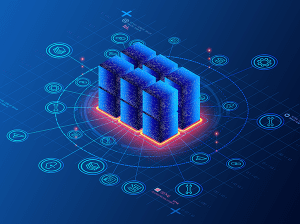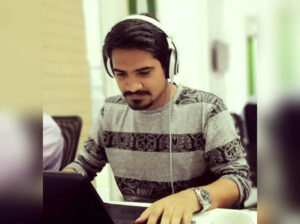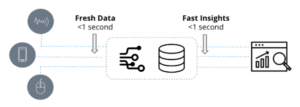
Cloud computing has enabled many organizations to improve the scalability and flexibility of a variety of crucial business functions. As migration to cloud-based solutions gains momentum, understanding the total cost of cloud adoption is crucial. Cloud economics, in particular, is a framework that has been tailored to evaluate and enhance the financial dimensions of harnessing cloud computing services.
Unleashing the Power of Cloud Computing: Benefits and Beyond
Organizations in their journey to building a cyber-resilient cloud strategy must first look at the different benefits that cloud computing can provide. The advantages that cloud computing brings are multifaceted, encompassing not only improved flexibility and scalability but also the potential for global reach and seamless collaboration. Many would agree that the cloud allows businesses to not only efficiently scale their operations but also adjust resources based on changing demands. This elastic nature, combined with managed services, liberates organizations from the burden of maintaining on-premises infrastructure, enabling them to focus on core competencies and innovation.
However, with the vast interest in cloud adoption, cyber resilience stands as an indispensable pillar. The surge in cyber threats across the globe demands fortified cloud security measures. An organization’s ability to effectively safeguard its cloud-based assets and swiftly recover from potential breaches or service interruptions can make all the difference in an increasingly interconnected and vulnerable world.
Unraveling the Cloud Economic Model
While the allure of cloud computing is undeniable, enterprises must tread cautiously when evaluating cloud service providers. Adherence to a cloud economic model can make all the difference in understanding the financial implications of cloud adoption. Key cost considerations encompass a complex web of factors:
Pricing Complexities: The pricing structures of various cloud service providers can be intricate and challenging to navigate. As organizations scale their cloud usage, accurately estimating costs becomes paramount. Understanding your business needs and finding the right vendor who can offer flexible solutions at a competitive price can ensure you’re getting the most out of your price range.
Data Transfer Costs: Transmitting data between cloud services, or between cloud and on-premises infrastructure, may incur additional expenses. Minimizing data transfer costs requires a thorough comprehension of data flows.
Resource Optimizations: Overprovisioning or underutilization of cloud resources can result in unnecessary expenditures. Optimizing resource allocation involves ongoing monitoring and fine-tuning to match usage patterns.
Vendor Lock-In: Choosing a cloud provider may bind an organization to a specific ecosystem. Understanding the implications of vendor lock-in is vital to maintain agility and prevent potential switching costs in the future. Some cloud providers allow businesses to be flexible in where they want their data and offer a range of solutions that are compatible with various systems.
Best Strategies for Cloud Optimization
Beyond comprehending the cost implications, organizations can implement strategies to optimize cloud usage and maximize the benefits of cloud provider selection.
Instead of relying on a single cloud provider, businesses should consider a multi-cloud approach. Embracing multiple cloud platforms offers flexibility, reduces reliance on a single vendor, and facilitates the adoption of best-in-class services from different providers. These scenarios also require resource monitoring and ensuring that cloud usage is correctly allocated. Implementing auto-scaling mechanisms based on demand patterns is one way that businesses can optimize performance and reduce costs during periods of lower activity.
Most importantly, it is crucial that cyber resilience is embedded into any cloud strategies. This entails adopting robust security measures, conducting regular audits, and proactively addressing potential vulnerabilities.
Charting the Path Ahead
The cloud is a gateway to unprecedented opportunities for growth and innovation. However, to fully capitalize on these possibilities, organizations must venture forth with a keen eye on the economics of cloud computing. Embracing a cyber-resilient cloud strategy that integrates cloud economic considerations and robust security measures will enable businesses to thrive in the digital realm.
As the cloud continues to evolve, organizations must remain agile and proactive, continuously adapting their strategies to seize emerging opportunities and tackle evolving challenges. By harnessing the power of the cloud, fortified with the knowledge of cloud economics and cyber resilience, organizations can confidently navigate the ever-changing landscape, transforming challenges into triumphs and forging a path towards sustained success.
- SEO Powered Content & PR Distribution. Get Amplified Today.
- PlatoData.Network Vertical Generative Ai. Empower Yourself. Access Here.
- PlatoAiStream. Web3 Intelligence. Knowledge Amplified. Access Here.
- PlatoESG. Automotive / EVs, Carbon, CleanTech, Energy, Environment, Solar, Waste Management. Access Here.
- PlatoHealth. Biotech and Clinical Trials Intelligence. Access Here.
- ChartPrime. Elevate your Trading Game with ChartPrime. Access Here.
- BlockOffsets. Modernizing Environmental Offset Ownership. Access Here.
- Source: https://www.dataversity.net/how-cloud-economics-help-businesses-build-cyber-resilience-in-the-cloud/
- :has
- :is
- :not
- :where
- a
- ability
- accurately
- across
- activity
- Additional
- addressing
- adjust
- Adopting
- Adoption
- agile
- All
- allocated
- allocation
- allow
- allows
- allure
- also
- an
- and
- any
- approach
- ARE
- AS
- Assets
- At
- audits
- based
- BE
- becomes
- been
- benefits
- between
- bind
- breaches
- Brings
- build
- Building
- burden
- business
- business functions
- businesses
- but
- by
- CAN
- capitalize
- cautiously
- challenges
- challenging
- changing
- choosing
- Cloud
- cloud adoption
- cloud computing
- cloud services
- collaboration
- combined
- compatible
- competitive
- complex
- complexities
- computing
- conducting
- confidently
- Consider
- considerations
- continues
- continuously
- Core
- Cost
- Costs
- crucial
- cyber
- data
- DATAVERSITY
- Demand
- demands
- difference
- different
- digital
- dimensions
- during
- Economic
- Economics
- ecosystem
- effectively
- efficiently
- embedded
- embracing
- emerging
- enable
- enabled
- enabling
- encompass
- encompassing
- enhance
- ensure
- ensuring
- enterprises
- evaluate
- evaluating
- ever-changing
- evolve
- evolving
- expenses
- eye
- facilitates
- factors
- financial
- finding
- First
- First Look
- Flexibility
- flexible
- Flows
- Focus
- For
- Forging
- forth
- Framework
- from
- fully
- functions
- future
- Gains
- gateway
- getting
- Global
- globe
- Growth
- Harnessing
- help
- How
- However
- HTTPS
- implement
- implementing
- implications
- improve
- improved
- in
- increasingly
- Infrastructure
- Innovation
- Integrates
- interconnected
- interest
- into
- involves
- IT
- ITS
- journey
- jpg
- Keen
- Key
- knowledge
- landscape
- Look
- lower
- maintain
- maintaining
- make
- managed
- many
- Match
- Maximize
- May..
- measures
- mechanisms
- migration
- minimizing
- model
- Momentum
- monitoring
- most
- multifaceted
- multiple
- must
- Nature
- Navigate
- needs
- of
- offer
- Offers
- on
- ONE
- ongoing
- only
- Operations
- opportunities
- Optimize
- optimizing
- or
- organization
- organizations
- out
- Paramount
- particular
- path
- patterns
- performance
- periods
- Pillar
- Platforms
- plato
- Plato Data Intelligence
- PlatoData
- possibilities
- potential
- power
- prevent
- price
- pricing
- Proactive
- provide
- provider
- providers
- range
- reach
- realm
- Recover
- reduce
- reduces
- regular
- reliance
- relying
- remain
- require
- requires
- resilience
- resource
- Resources
- result
- right
- robust
- Scalability
- Scale
- scenarios
- seamless
- security
- Security Measures
- Seize
- selection
- service
- service providers
- Services
- should
- single
- Solutions
- some
- specific
- stands
- strategies
- Strategy
- structures
- success
- surge
- sustained
- swiftly
- Systems
- tackle
- tailored
- that
- The
- The Future
- their
- Them
- These
- they
- this
- threats
- Thrive
- to
- Total
- towards
- transfer
- transforming
- undeniable
- understanding
- unprecedented
- Usage
- variety
- various
- Vast
- vendor
- venture
- vital
- Vulnerabilities
- Vulnerable
- want
- Way..
- web
- when
- WHO
- will
- with
- world
- would
- Your
- zephyrnet












